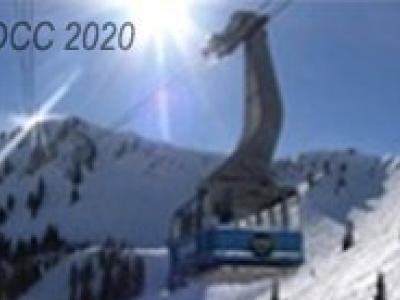Documents
Poster
Temporal Redundancy Reduction in Compressive Video Sensing by using Moving Detection and Inter-Coding

- Citation Author(s):
- Submitted by:
- JIRAYU PEETAKUL
- Last updated:
- 27 March 2020 - 3:13am
- Document Type:
- Poster
- Document Year:
- 2020
- Event:
- Presenters:
- Jirayu Peetakul
- Categories:
- Log in to post comments
Compressive sensing is a simultaneously signal acquisition and compression technique for efficiently acquiring and reconstructing a signal from a small number of measurements, which can be obtained by linear projections onto sparse signal. In order to further compress the measurements, many works applied intra prediction-based measurement coding. In this paper, we proposed temporal redundancy reduction in compressive video sensing by using moving detection and inter-coding. Firstly, the moving detection is performed coding area extraction using local adaptive threshold to classify the measurement with an association of error distinction. However, false positive detection could be occurred randomly, which transmission cost can be increasing uncertainty. In order to reduce transmission cost, the adaptive quantization parameters are adjusted by how frequently the area is detected. Moreover, we further compress the detected area by encoding the difference of current measurement and the best matching measurement in neighboring frames. Finally, an efficient recovery algorithm of sparse signal is performed by using l_1-minimization via primal-dual interior-point algorithm and reconstructed by inverse fast Walsh-Hadamard transform with horizontal kernel filter to prevent staircase artifacts simultaneously. The experimental results show that our proposed can greatly reduce bandwidth usage in terms of BPP by 63.15%, improve in PSNR by 1.56dB, and SSIM by 14.81% on average when compared to the state-of-the-art.

